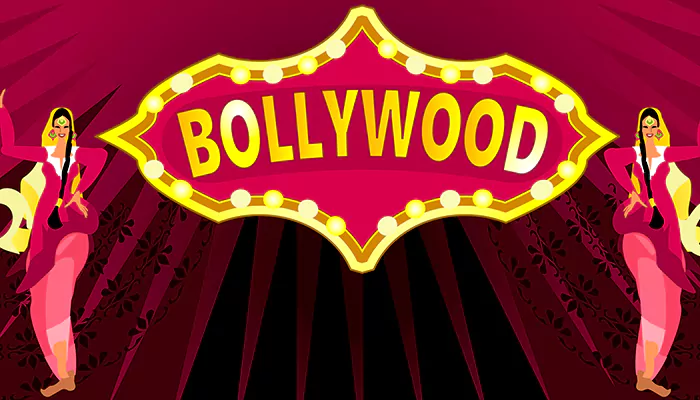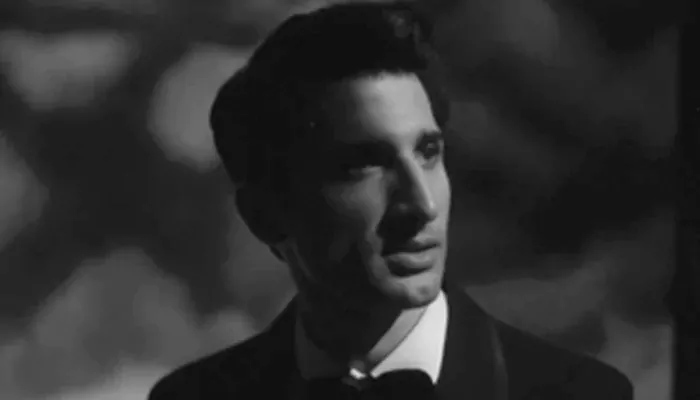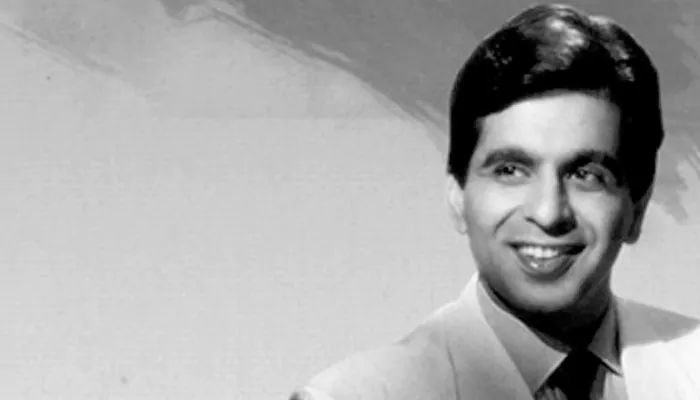
The 1947 Partition transformed the very foundation of Hindi cinema's business and legacy.
When we talk about the Partition of 1947, our minds often go straight to the trauma, especially the mass displacement and the lives lost. And rightfully so. However, the impact didn’t stop at borders and people. It shook up entire ways of life and industries, including the Hindi film industry. At first glance, it might sound odd (even a little insensitive) to say that something as tragic as Partition ended up benefiting any sector. But if we look purely from a business lens, the Hindi film industry saw a major transformation post-Partition that arguably laid the foundation for the Bollywood we know today.
In the years leading up to Partition, Hindi cinema pulsed through three key cities: Bombay, Lahore, and Calcutta. And each had its own cultural texture.
Bombay was the commercial engine, as it was home to the likes of Bombay Talkies and Imperial Studios. Calcutta, deeply intellectual and artistically adventurous, was the cradle of cinematic finesse, where New Theatres produced sophisticated dramas like 'Devdas'. And Lahore was a city alive with music, folklore, and raw creative promise. Studios like Pancholi Pictures were pioneering a distinctly Punjabi cinematic grammar, blending rustic charm with modern form, as seen in the 1941 film 'Khazanchi'.
In #WayBackWednesday, a lobby card for Moti Gidwani’s #Khazanchi (1941), featuring #Narang & #Manorama. A murder mystery made in the #40s in Lahore, best known for its use of #Punjabi folk music. pic.twitter.com/MA56UrhzJq
— NFDC-National Film Archive of India (@NFAIOfficial) June 6, 2018
((Credit: NFDC-National Film Archive of India)
Now, what connected these far-flung centers wasn’t uniformity, but a shared cinematic language born from diversity. Punjabi actors, Bengali directors, Parsi theatre traditions, and Urdu writers all collaborated under one roof, exchanging not only scripts but also creative sensibilities. It was, as historian Mihir Bose describes in 'Bollywood: A History', “A federation of regional identities,” bound by a loose but dynamic alliance.
However, partition would tear through this fragile balance.
Lahore was among the first casualties. Once a thriving node of cinema in northern India, it found itself overnight on the wrong side of the Radcliffe Line. Hindu and Sikh filmmakers who had built their studios and nurtured their stars now fled toward Bombay, the last standing refuge of Hindi cinema.
Calcutta, too, suffered. With the creation of East Pakistan, the Bengali-language film industry lost a large part of its audience and infrastructure. For many Bengali artists, Bombay offered survival, and not to mention opportunity.
Bombay responded by absorbing. And in that act of cultural intake, it transformed. The city became both workshop and womb, birthing a cinema that was less tethered to geography. Here, filmmakers like B.R. Chopra (who escaped Lahore after his studio was torched) reimagined their careers.
Prithviraj Kapoor, a towering figure in Lahore’s theatre circles, established R.K. Films in Bombay, laying the foundation for a dynasty. K. Asif, who had begun his career in Lahore, brought his vision to 'Mughal-e-Azam' that took over a decade to make and still bears the scars and splendor of a divided history.
Tribute to Prithviraj Kapoor on birth anniversary.
— Film History Pics (@FilmHistoryPic) November 3, 2017
Born in Faisalabad, he debuted with a small role in film ‘Do Dhari Talwar’ (1928). pic.twitter.com/h1s5G71Dnf
(Credit: Film History Pics)
Partition uprooted lives, but in Bombay, it also sowed new ground. What came next would be nothing short of a golden age.
For decades, Calcutta had been the soul of Indian cinema. But after Partition, its film industry, isolated and economically weakened, began to lose its prominence. But what it didn’t lose was its talent.
Filmmakers like Bimal Roy (formerly of New Theatres) migrated to Bombay, carrying with them an aesthetic built on realism and a deep empathy for the underdog. His 'Do Bigha Zamin' painted rural poverty with neorealist clarity, carrying the styles of the Italian masters while staying Indian. 'Madhumati', co-written by the legendary Ritwik Ghatak, captured the eerie and the eternal, blending folklore with cinema’s power to haunt. A few years later, Hrishikesh Mukherjee came with his emotionally rich films ('Anand', 'Guddi', 'Abhimaan', etc.) that redefined Hindi storytelling with their intimacy. Salil Chowdhury’s music, deeply influenced by Bengali folk and Western classical arrangements, created sonic emotions on celluloid that elevated even the simplest of scripts.
Bimal Roy with team ‘Devdas’ - SD Burman, Suchitra Sen, Dilip Kumar
— Film History Pics (@FilmHistoryPic) January 8, 2021
Tribute to filmmaker BIMAL ROY
(12 Jul 1909 – 7 Jan 1965) pic.twitter.com/0SKS2YNzV6
(Credit: Film History Pics)
What the Bengalis brought to Bombay was the ability to look at a nation not through the lens of grandeur, but of grace. In doing so, they taught Hindi cinema not only how to move, but also how to feel.
If Bengal brought cinema its conscience, Punjab brought it its heartbeat. The exodus from Lahore and its surrounding regions populated Bombay with storytellers who knew how to make emotions roar. The Kapoor family (although Prithviraj Kapoor had come to Bombay before the partition) carried their Peshawar-Lahore lineage into every frame, shaping popular Hindi cinema as much with their theatrical exuberance as their melancholy. Yash Chopra, raised in Lahore, brought Punjabi warmth and longing into romantic sagas like 'Waqt' and 'Kabhi Kabhie'. His brother, B.R. Chopra, became a chronicler of India’s evolving morality. Balraj Sahni, who had taught in Lahore before the war, became the moral compass of post-Independence cinema. His performances in 'Do Bigha Zamin' and 'Garam Hawa' were less acting than inhabiting. And there was Sahir Ludhianvi as well, the poet from Ludhiana, whose words bled both revolution and ruin. His lyrics for 'Pyaasa' and 'Kabhie Kabhie' remain among the most enduring testaments to Partition’s inner wounds.
“.. aise mahaul mein mujhe kabhi shanti nahi milegi ..”
— Film History Pics (@FilmHistoryPic) April 20, 2025
Guru Dutt, Pyaasa, 1957 pic.twitter.com/ab1brOOTXc
(Credit: Film History Pics)
Notably, as Rachel Dwyer notes in 'Filming the Gods', Punjabi storytelling prized emotion over restraint. Partition brought this ethos to Bombay in full force, and the industry was never the same again.
In recent memory, few works have captured the Partition-era film world as interestingly as Amazon Prime Video’s 'Jubilee', directed by Vikramaditya Motwane. The series threads the story of Jay Khanna, a Karachi-born artist who flees to Bombay during the Partition, and then becomes a stalwart of the Bombay film industry.

Khanna’s arc, from refugee to reluctant mogul, is a reflection of countless real lives. The series doesn’t romanticize the era. It shows Bombay as a city of contradictions, and reminds us that the stories born in this time were lived.
Partition did more than redirect talent. Precisely, it rewired the machinery of cinema itself in India. With Bombay now the central hub, the industry began to organize.
Studios like Filmistan, Mehboob Studios, and R.K. Films became institutions, managing production, distribution, and marketing under one roof. The star system crystallized, with actors like Nargis, Raj Kapoor, and Dilip Kumar becoming brands. Music labels formalized their hold, and a nationwide network of cinemas grew around the certainty of Bombay’s output.

As Ashish Rajadhyaksha writes in the 'Encyclopaedia of Hindi Cinema', this consolidation was not only practical, but also cultural. Hindi cinema became India’s shared language. It didn't matter if you came from Punjab, Bengal, Gujarat, or Kerala. If you watched the same movie, you belonged.
Some films tackled the trauma head-on. 'Dharmputra' dared to confront communalism at a time when few would. 'Garam Hawa', a haunting portrayal of a Muslim family's post-Partition despair, remains one of Indian cinema’s most empathetic political films. Decades later, 'Refugee' reengaged with the theme, albeit with Bollywood’s characteristic gloss. Films like 'Aan', 'Awara', and 'Mother India' offered spectacle and hope, helping audiences imagine futures rather than dwell on fractures. As historian Rakesh Sengupta has said, “Cinema became a balm", allowing a nation to grieve and then to dream.
With time, the Bombay film industry became Bollywood. And it became one of the most potent engines of cultural expression in the world.